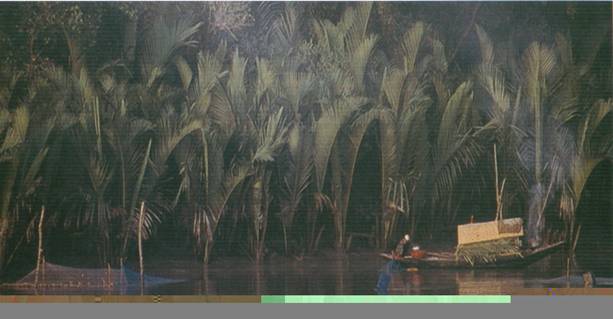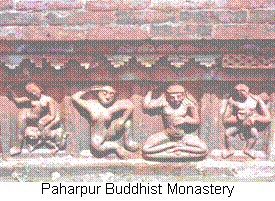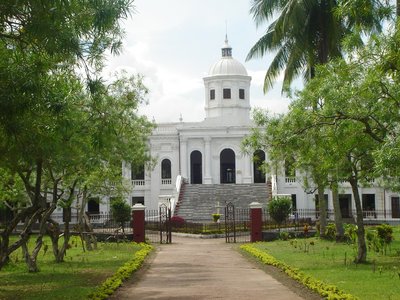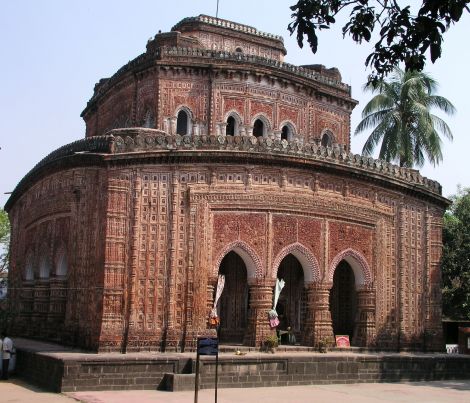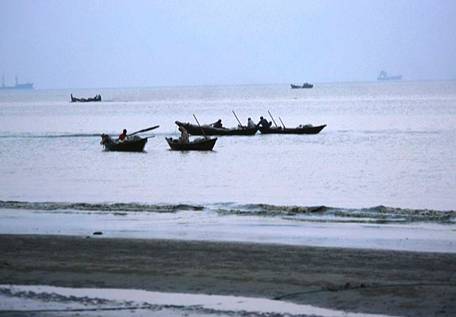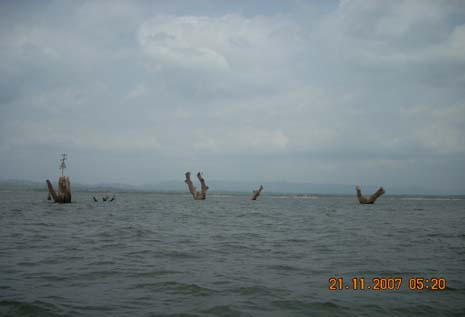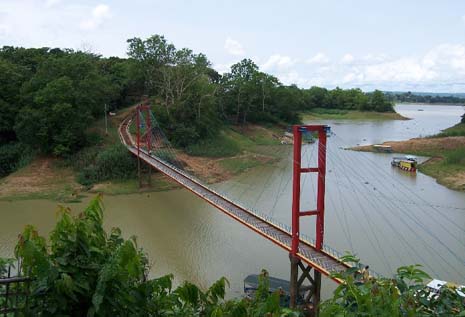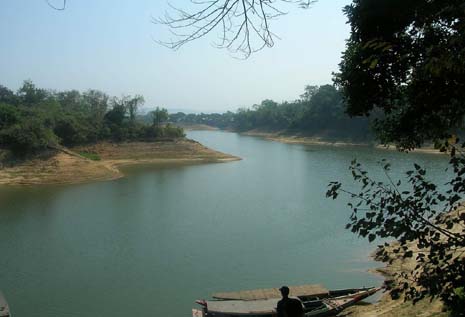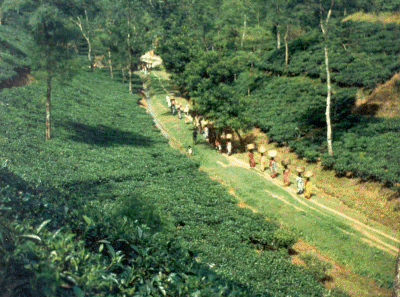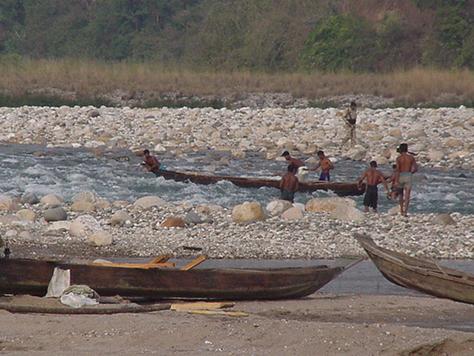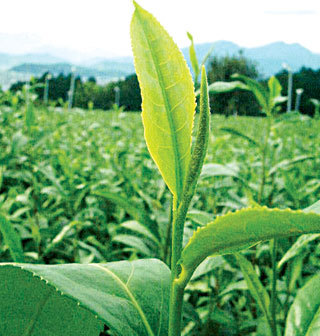
World Heritage Mangrove Sundarbans Tour

Sundarbans National Park
The Sundarbans-the largest continuous blackofmangrove forest in the world -covers in area of 5770sq.km of land and water. It is a part of world's largest delta, which has been formed form sediments deposited by the great rivers Ganges and Bhamhaputra that converge on to the Bengal basin. The western part of the forest lies India and the rest [about 60%] in Bangladesh . River channels and tidal creeks, varying, in width from just a few meters to five kilometers in some places All parts of the Sundarbans forest are subject tidal inundation during spring tides. The Bangladesh part of the forest is dominated by a high mangrove forest cover. The climate is mainly tropical maritime with lots of rain, most of which falls during the monsoon. The monsoon season [May-October] is hot and humid, while winter [October-Feb] is mild and dry. During January temperature can fall as low as 4 deg c.
The entire National Park area is covered by mangrove forest. There are small patches of brackish marshes on emerging islands and riverbanks, and sandy areas with grass and low shrubs on some of the outer islands. The two dominant mangroves are Sundori and Gewa
[ Excoecaria agallocha]
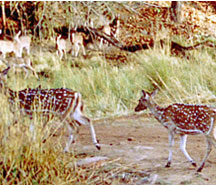
Sundarbans Inside

[ panthera Tigri ] .
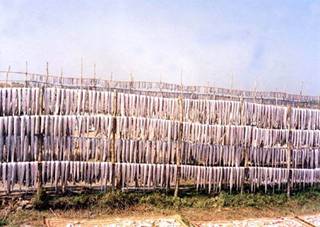
Dry fish
Sundarbans is home to many different species of birds, mammals, and insects, reptiles and fishes. Over 120 species of fish and over 270 species of birds have been recorded in the Sundarbans.The gangetic River Dolphin is common in the rivers, and no less than 50 species of reptiles and eight species of amphibians are known to occur. The Sundarbans now support the only population of the Estuarine or salt -water Crocodile in Bangladesh , and the population is around two hundred individuals.
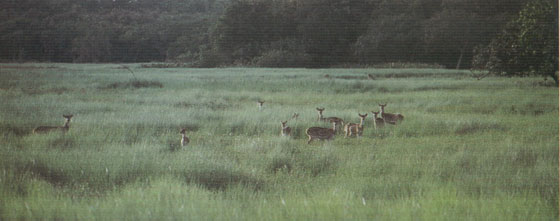
About 32 species of mammal are still found in this forest. Among these are Rhesus Macaques, Clawless, Otters, and Leopard Cats, Fishing Cats and Spotted Deer. The entire Sundarbans Forest comprises the largest remaining tract of habitat for the Royal Bengal Tiger
Some Bright Moments with The World heritage Sundarbans
The package is towards Sundarban forest that is declared by UNISCO as world Heritage Side, we also have to visit some archeological sides here.
Bengladesh Archeology Tour : |
|
Green Hill Tour
|
Chittagong: The second largest city in Bangladesh sits on the bank of the Karnapuli River and has an interesting old waterfront area known as Sadarghat which reflects the importance of river trade to the city's growth. Nearby is the old Portuguese enclave of Paterghatta which remains mostly Christian. The Shahi Jama-e-Masjid and Qadam Mubarak Mosque are two of the most impressive buildings in the city. It's also worth visiting the Ethnological Museum in the Modern City which has interesting displays on Bangladesh's tribal peoples. There are good views and cooling breezes from Fairy Hill in the British City in the north-western sector of the city. Flights between Dhaka and Chittagong leave three to four times a day, as do the trains, which can take up to seven hours to reach Chittagong. The Dhaka-Chittagong highway is one of the better roads in the country, and there are several bus lines that use it, but the trip can be hairy at times and takes almost as long as the train trip, which is more comfortable and less nerve wracking. Chittagong is 264km (164mi) southeast of Dhaka. |
|
|
|
|
Once Again with the pastThis tour's destination is to visit the interesting tribal culture with our cool forest life with the Chittagong hill districts The tour will bring you once again a back journey towards the past. |
Tea Fresh Tour |
Sylhet City : The Sylhet valley is formed by a beautiful, winding pair of rivers named the Surma and the Kushiara both of which are fed by innumerable hill streams from the north and the south. The valley has good number of haors, which are big natural depressions. During winter these haors are vast stretches of green land, but in the rainy season they turn into turbulent seas. Sylhet division occupies the north east part of Bangladesh , has an area of 12596 sq. km and a population of 7.899 million. There are 4 districts and 14 municipalities under Barisal . It is a natural hilly, forest area with ox bow lakes and famous shrines. Sylhet is the land of Shrine 's, natural Hills, forests, beautiful tree plantations and lots of Haors. It is an old city with full of natural beauties. A large number of tourists come every year to visit Sylhet. The main attraction of Sylhet city is the Shrine of Hajrat Shahjalal(R) and Hajrat Shah Poran (R). Shrine of Hajrat Shahjalal (R) is on the top of a hillock (tilla) in Sylhet city. Thousands of visitors are coming everyday in this Shrine. Shrine of Hajrat Shah Paran (R) is eight km far from Sylhet town on the Sylhet-Jaflong road where also thousands of visitors visits this Shrine everyday. Road journey to Sylhet is an wonderful experience through roads running ups and down the hills and green lush tea gardens of nature at its best.
Water fall sylhet
ALL AROUND THE FRESH AND GREEN |
Blue Sea Tour
Cox's Bazar
Bangladesh 's only beach resort is near the Myanmar border in an area where Rohingya refugees have settled to escape persecution in Myanmar. It has a Burmese Buddhist flavour and few amenities to service the visitors attracted by its enormous expanse of shark-free beach. Even modestly clad bathers, especially females, should expect to be gawked at by locals and Bangladeshi holidaymakers. Bangladeshi women who swim (they are a rare breed) do so in a flowing shalwar kameez . South of Cox's Bazar are more secluded beaches where having a swim can still be a private experience rather than a public spectacle. They include Himacheri Beach and Inani Beach . Note that the beaches are not considered entirely safe at night.

Cox's Bazar sea beach
At the moment the road from Chittagong to Cox's Bazar is one of the worst in the country and still unfinished, but you can avoid it altogether by making your way from Dhaka to Chittagong, and then doing a short 20 minute flight from there. Alternatively buses go straight from Dhaka to Cox's Bazar, a distance of 370km (230mi).
St Martin Island
This small coral island about 10km (6mi) south-west of the southern tip of the mainland is a tropical cliché, with beaches fringed with coconut palms and bountiful marine life. There''s nothing more strenuous to do here than soak up the rays, but it''s a clean and peaceful place without even a mosquito to disrupt your serenity. It''s possible to walk around the island in a day because it measures only 8 sq km (3 sq mi), shrinking to about 5 sq km (2 sq mi) during high tide. Most of island''s 5500 inhabitants live primarily from fishing, and between October and April fisher people from neighbouring areas bring their catch to the island''s temporary wholesale market. A ferry leaves Teknaf for St Martin every day and takes around 3 hours.
Getting to St. Martin''s is a three-step program. First you''ll need to fly or bus it down to Cox''s Bazar, and then catch a bus to Teknaf, which is right on the very tip of Bangladesh, sandwiched up against Myanmar. From Teknar, ferries run daily to St. Martin Island. The total distance from Dhaka to the island is 510km (316mi).
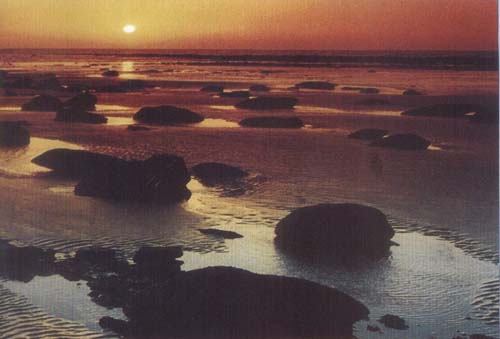
Corals of the Saint Martin Island
WHERE THE FRIENDSHIP OF SKY AND SEA
The nature has a lot of secrets and moods. Men love friendship may be nature also. To see the friendship of sky and see we will bring you Cox's Bazar the largest unbroken sea breach of the world.
All right reserved by Abohomanbangla.com
